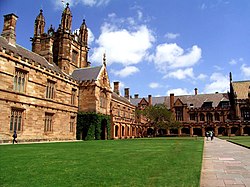| Frontiers of Science | |
|---|---|
| Author(s) | Stuart Butler, Robert Raymond |
| Illustrator(s) | Andrea Bresciani (1961–1970); David Emerson (1970–1987) |
| Launch date | 1961 |
| End date | 1987 |
| Syndicate(s) | Over 200 newspapers worldwide |
| Publisher(s) | University of Sydney (archive); softcover editions |
| Genre(s) | Science, Education |
Frontiers of Science was an illustrated comic strip created by Professor Stuart Butler of the School of Physics at the University of Sydney in collaboration with Robert Raymond, a documentary maker from the Australian Broadcasting Corporation (ABC) in 1961. [1] The artist was Andrea Bresciani. [2] After 1970 the comic was illustrated by David Emerson. [3]
It explained scientific concepts and recent research and in a 3 or 4 panel illustrated strip in an accessible and easily comprehensible way. The strip was syndicated to over 200 newspapers around the world for 25 years, from 1961 to 1987. [4] It was also published as soft cover books. As of 2011, it "retains the record of being the longest-running newspaper science comic strip in the world." [5]
The strips are archived at Rare Books and Special Collections in Fisher Library at the University of Sydney. The entire series is available for viewing online. [6] [7]

